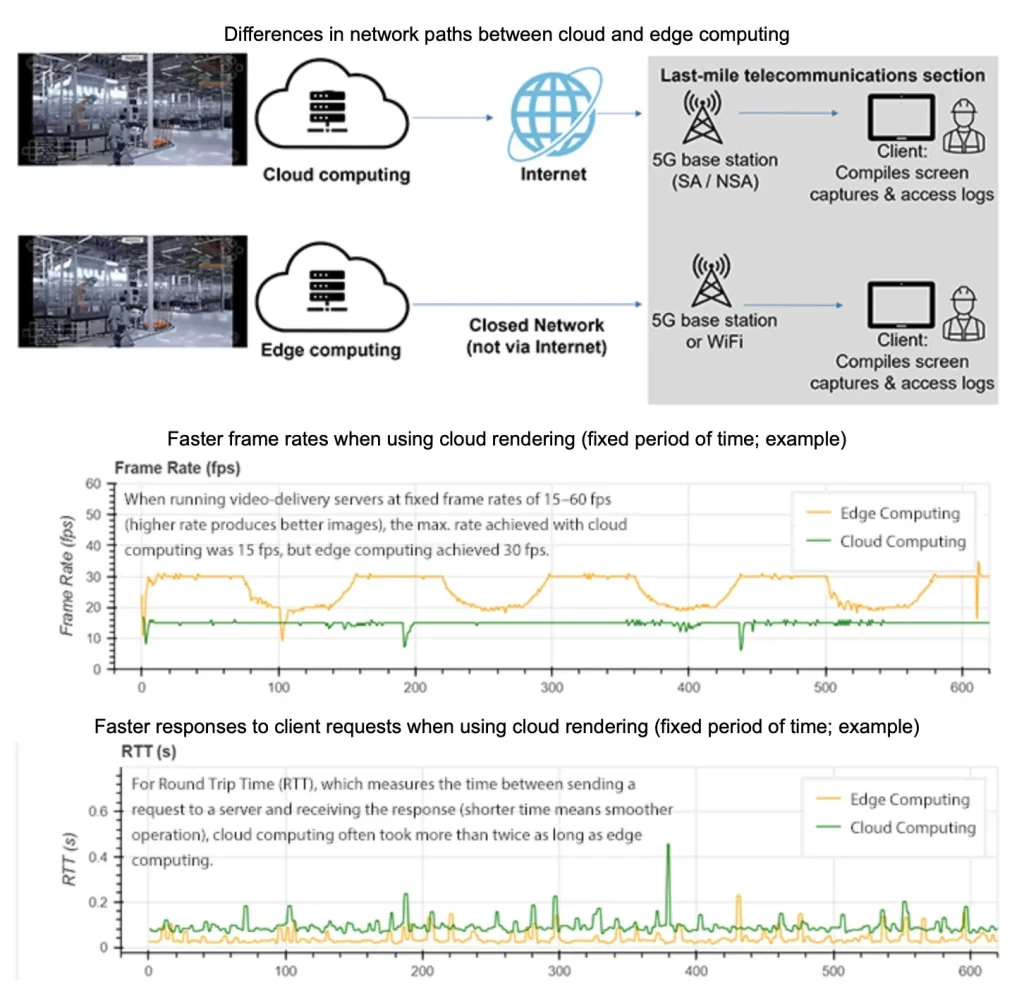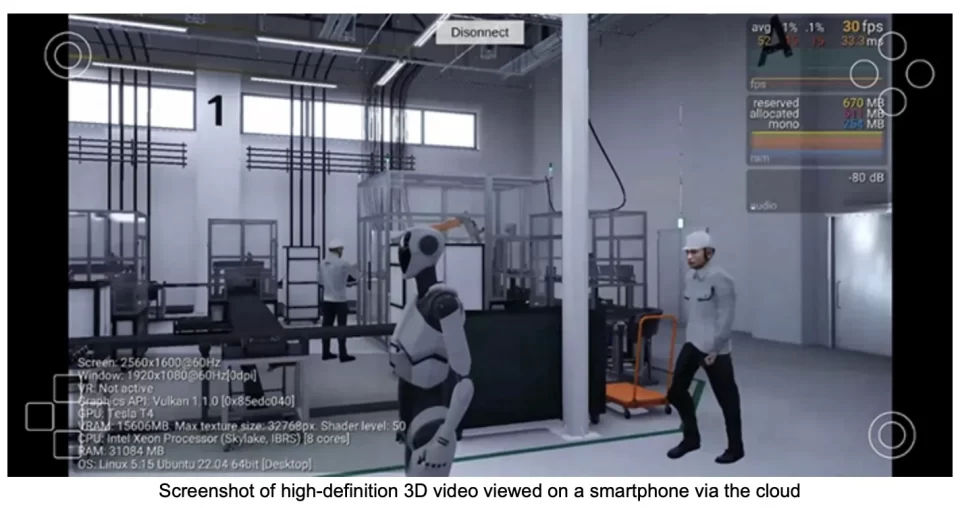NTT DOCOMO and NTT Communications Corporation have jointly conducted a test to successfully demonstrate DOCOMO’s new multi-platform cloud-rendering technology. The test deployed the new technology in edge-computing environments sold by NTT Com, such as docomo MEC and on-premises edge servers. The results will be presented at Augmented World Expo Asia (AWE Asia) in Singapore on August 27.
DOCOMO’s new technology, which can be added as middleware to 3D-image processing applications, enables access to high-definition 3D video using standard tablets and smartphones. Environments for using good-quality 3D video can be achieved by deploying the technology in edge-computing environments. Until now, 3D image-processing applications have required the use of high-performance computers, making practical implementation difficult. But DOCOMO’s newly demonstrated technology, which allows high-precision information to be visualized in the cloud before the results are transmitted to mobile devices, will make the use of 3D images in industrial settings a practical reality.
The demonstration applied the technology to cloud computing and edge computing environments. Later, evaluations were conducted to determine 3D video quality and responsiveness to operations performed with tablets and smartphones on mobile 5G and Wi-Fi/LAN systems similar to those used in typical user facilities. The results (see appendix) confirmed the achievement of excellent video quality and fast response times in the edge computing environment, demonstrating the possibility of smooth, seamless 3D video playback on mobile devices.

DOCOMO and NTT Com aim to launch commercial services based on this new technology from the fiscal year starting in April 2025. Combined with edge-computing environments that ensure high transmission quality, low latency and high security, a variety of multi-platform cloud-rendering services are expected to become available on a reliable and secure basis, anytime and anywhere. DOCOMO and NTT Com also hope to accelerate the digital transformation of the entire industrial sector by building an ecosystem that integrates various applications, including digital twins and the metaverse.
The new technology, which is developed to address the existing challenges, is expected to help realize digital twins for purposes such as designing factory floors and using 3D video in point-cloud surveys for civil engineering and construction sites. Also, in the industrial metaverse, the technology will enable pseudo-immersive experiences for training, manufacturing-process simulations and quality control. In addition, combining this technology with edge computing and docomo MEC is expected to lead to highly secure, low-latency business applications that offer both portability and maintained quality.


